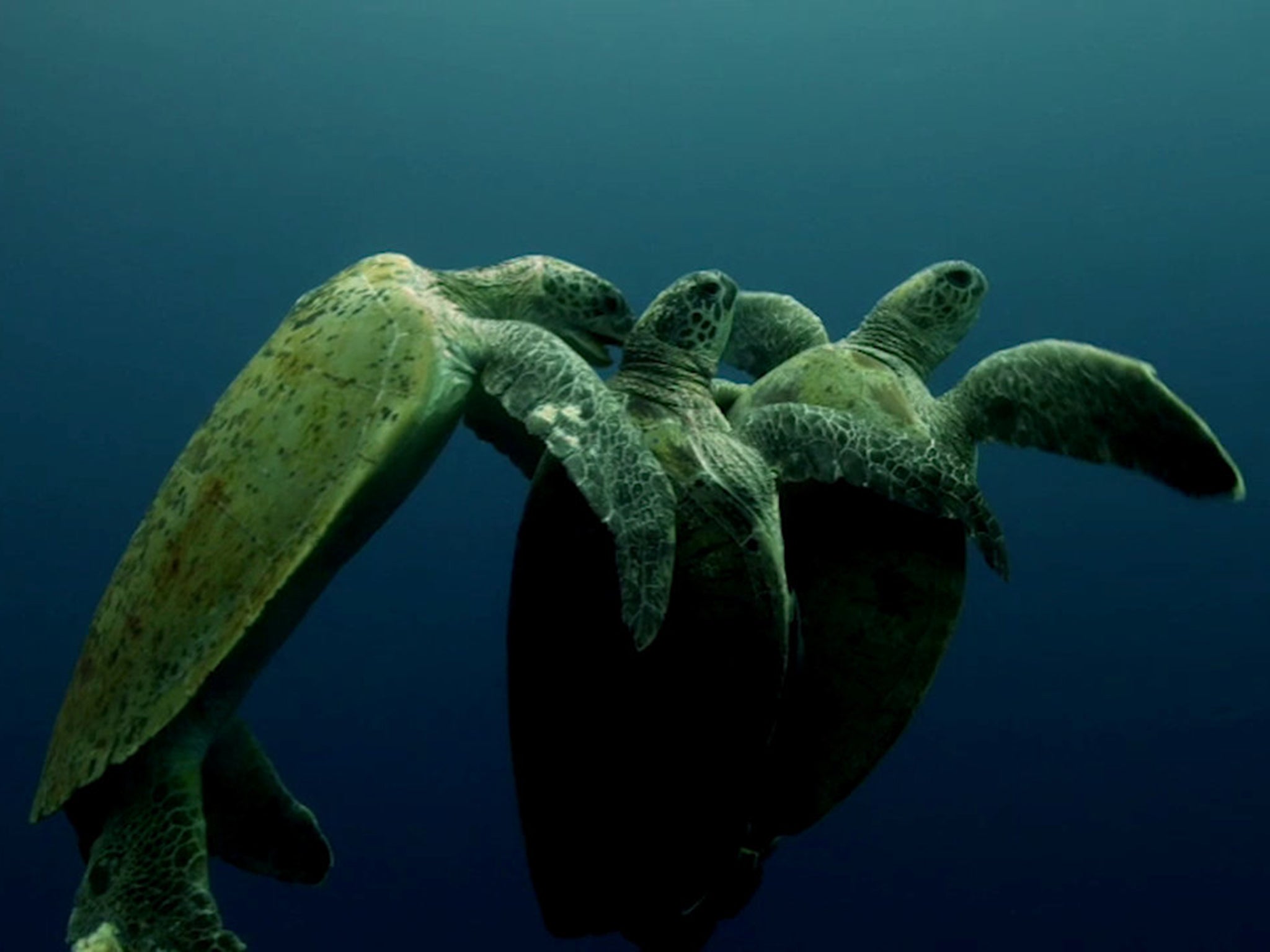Mating turtles fight off possessive biting male in dramatic footage
Female runs out of oxygen as male intruder tries to split pair
Rare underwater footage of a pair of mating turtles fighting off a male intruder has been released ahead of a new nature television series.
The clip shows the pair of olive ridley turtles being interrupted by another male who begins to nip at the mating male’s soft flesh.
During turtle breeding season it is common for possessive males to try and separate a mating pair.
But as the mating male turtle clings on to the female, she is unable to resurface and quickly begins to run out of oxygen.
“The fiercer the pursuit, the more oxygen she burns,” narrator Bear Grylls, who presents the series Hostile Planet, says.

“A stressed turtle can drown in minutes. She is desperate to reach the surface and breathe, but one challenger just won’t give up.
''The female is running on empty.”
After being pushed to the ocean floor, the intruder backs off long enough for the female to resurface before almost drowning.
The footage was captured by divers who spent up to six hours at a time filming under water.
The second episode of Hostile Planet explores how harsh life is for animals living in the ocean, following the stories of a number of creatures including seals and orcas.
Commenting on the filming process to capture the turtle scene, cameraman Mateo Willis said: “No turtle costumes were used, but instead of breathing air in a normal tank which releases a lot of gas and makes noises as the air bubbles go up to the surface, divers use rebreathers which recirculates the air and scrubs the carbon dioxide out of it, replacing it with oxygen.
''They hardly make any noise because they’re not making a stream of bubbles.
"It’s amazing how much more natural animals will behave around divers using rebreathers.”
The camera operators dived everyday for a month to film the turtles in their natural surroundings.
They were able to track down the olive ridley turtles by referring to past locations and talking to locals.
“When you’re in the ocean you have the added complication you are dealing with the weather,” Mr Willis added.
“You need to have the right conditions to get in the water – you need calm and enough sunlight. The divers would stay in a particular area.
''The area might be a particular point on a coral reef or where currents meet or from past history, or talking to the locals.

"The divers spend several hours at a time under the water. It takes a very special sort of person to be a dive camera man.”
For every minute of footage aired, another 800 were rejected with the series taking three years to film in total.
Hostile Planet continues on National Geographic on Sunday 5 May at 9pm.
SWNS
Join our commenting forum
Join thought-provoking conversations, follow other Independent readers and see their replies
Comments
Bookmark popover
Removed from bookmarks